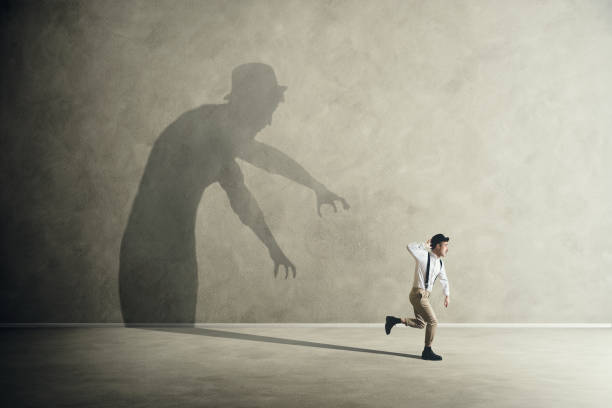The fight or flight response, also known as fear, is often referenced in day-to-day occasions. Being afraid of a scary movie, a roller coaster, swimming, heights or needles are just some simple examples of fear that can be observed in daily events. However, what causes that fear? Is it the needle itself or something more than that? According to Lisa Fritscher¹ and Daniel Block, MD², fear can be defined as “a natural, powerful, and primitive human emotion. It involves a universal biochemical response as well as a high individual emotional response.” Fear is the way the brain alerts us of any threat, harm or presence of danger, physical or psychological. The instinctive response to danger and fear is fight or flight, where fight would mean confronting the fear and dealing with it, and flight would be retreating back to safety.
Fear occurs in the small part situated in the center of the brain called amygdala through a sudden release of hormones. Any threat or danger stimulus triggers the amygdala, which then activates motor areas in order to prepare for the fight or flight response. The action of fear proceeds in three steps: alarm, when the threat is first perceived; resistance, when the body goes through the fight or flight period; and finally, exhaustion, when the body comes down from the high alert it experienced during the resistance period. While the chemical reactions and body response to fear happens internally and subconsciously, people react consciously by choosing a response based on their age, previous experience and level of fear. Even though people often assume the only reactions to fear are fight or flight, in reality there are five responses: fight, flight, flop, freeze, or friend. Flop is the only response which is not self explanatory, and essentially occurs when the brain shuts down and the muscles become “floppy,” making a person submissive to suggestion. The rest of the responses are experienced more often.
Even though we are encouraged to face our fears in order to get through them, there are some negative effects on the body from fear. Some of those include weakening the immune system and could potentially cause cardiovascular damage or decreased fertility. Other effects include accelerated aging and premature death. However, fear is also important. It protects us from potential dangers around us and makes sure we stay alive. On one hand, needles cannot kill us during injections, but on the other hand, falling from a high place could, therefore our body naturally responds by taking a step back and moving away from the potential danger. Despite the negative sides of fear, it also proves beneficial for the body. With healthy doses of it, comes a potential feeling of empowerment, which temporarily boosts the immune system, helps weight loss, helps manage stress, and gives people a moment of clarity. Fear is a constant state people experience and have learned to overcome, and by observing the benefits and detriments, a conclusion can be drawn in how necessary fear is in people’s lives and how unescapable it is.
Fear is the natural, animalistic instinct, embedded in people that protects them from any external stimuli that could hurt them or endanger their lives. Despite the negative effects of fear, it is unavoidable, due to the millions of external stimuli people experience daily. In healthy levels, fear is a positive aspect of life that should be confronted every so often in order to maintain the body healthy and alert. Depending on how large the threat is and if it can be confronted, people respond with fight or flight. This unites people and animals, showing the primitive instincts society often likes to suppress and ignore. Fear teaches us that our lives are vulnerable and we should not undermine those animalistic instincts. “We are to learn about fear, not how to escape from it.” – Jiddu Krishnamurti
¹ Lisa Fritscher is a freelance writer and editor with a deep interest in phobias and other mental health topics.
² Daniel B. Block, MD, is an award-winning, board-certified psychiatrist who operates a private practice in Pennsylvania. He is medically reviewing Fritscher’s articles.
Bibliography
- Better Health. “Fighting Your Fears.” Fighting Your Fears – Better Health Channel, 2017, www.betterhealth.vic.gov.au/health/healthyliving/Fighting-your-fears.
- Cleveland Clinic. “What Happens during Fight or Flight Response.” Cleveland Clinic, Cleveland Clinic, 20 Aug. 2021, health.clevelandclinic.org/what-happens-to-your-body-during-the-fight-or-flight-response/.
- DiGregorio, Trina. “Disease Prevention and Healthy Lifestyles.” The Stress Response | Disease Prevention and Healthy Lifestyles, 2020, courses.lumenlearning.com/suny-monroecc-hed110/chapter/general-adaptation-syndrome/.
- Kraan, Ashley. “The Science behind Fear.” Science World, 26 Oct. 2020, www.scienceworld.ca/stories/science-behind-fear/.
- Northwestern , Medicine. “5 Things You Never Knew about Fear.” Northwestern Medicine, 2019, www.nm.org/healthbeat/healthy-tips/emotional-health/5-things-you-never-knew-about-fear.
- The Regents of The University of Michigan. “PSYCHOEDUCATION: TRAUMA 5Fs of Trauma Response.” Trials of Wellness, 2 July 2020, storage.trailstowellness.org/trails-2/resources/5-fs-of-trauma-response.pdf.

